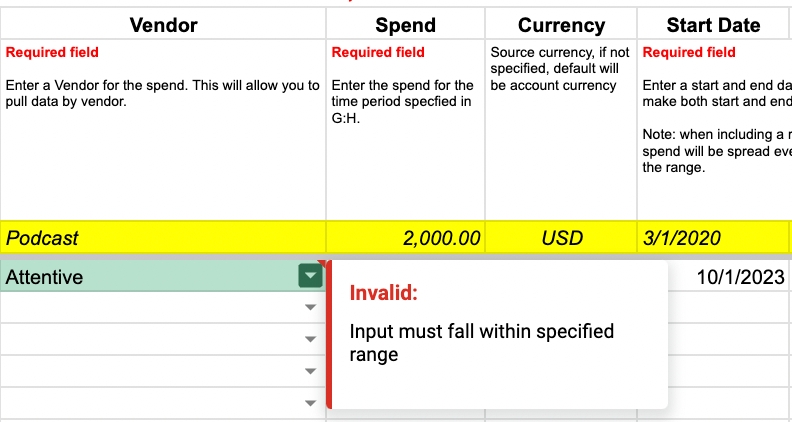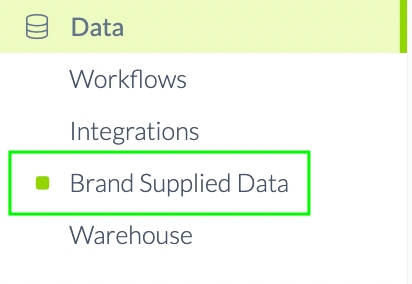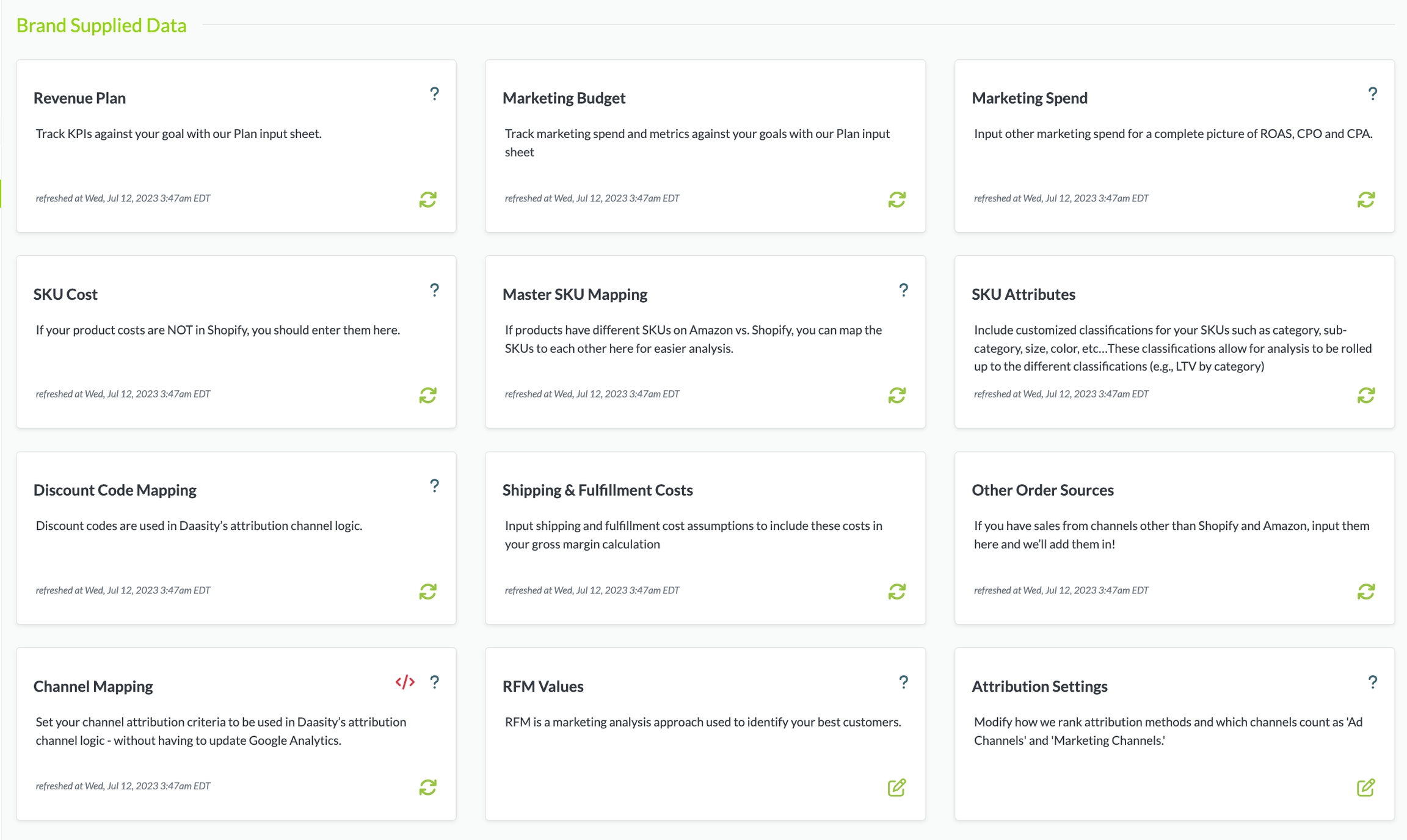BSD Overview
You can enrich your data with the Brand Supplied Data Sheet by adding supplemental data and modifying existing data. You can update your BSD Sheet at anytime.
Not All Sections of the Brand Supplied Data will be Relevant to All Merchants. It is okay to leave unneeded sections blank. Fill out only what is important to your Organization.
If you are a Growth Merchant the Brand Supplied Data Sheet is the Only way to push data into Daasity (Other then your Integrations)
Our Enterprise Merchants do have several options to push Data into Daasity (e.g. ERPs, S3 File Loaders, Custom G-Sheets)
The BSD sheet is the most efficient for most data. Enterprise Merchants please email [email protected] to learn more.
It is important to fill out your Brand Supplied Data Sheet correctly because the data is formatted to connect to our transform code.
Please follow the instructions on the Sheet as well as in the help articles.
Examples of Errors in Your Brand Supplied Data
Leaving a required field blank in a populated row will result in an error

Typing a value in a field that requires a Dropdown Menu will result in an error

Any error in your BSD Sheet will result in a break in the entire sheet and your BSD data will Not refresh for that day.
You will be notified of an error and where the error occurred at the top of your Brand Supplied Data page in your Daasity app.


Accessing Your Brand Supplied Data (BSD)


If you do Not have access to your Brand Supplied Data Sheet Please email [email protected]
Standard BSD
Compare your projected Monthly/Daily Revenue to your Actuals
Compare your projected Marketing Spend to your Actuals
Track your Marketing spend for Vendors and Affiliates that are Not tracked via an API (e.g. Klaviyo, Rakuten)
Include shipping and fulfillment costs to your margin
Add your SKU costs to Daasity and track changes over time
Map SKUs across multiple stores (e.g. Amazon > Shopify)
Build a SKU hierarchy matrix to analyze SKUs based on Attributes such as Category, Size, Material, Color and Collection. Leverage this to analyze your SKUs performance based on these attributes.
Match a Discount Code to a specific Channel or Vendor for Attribution
Push Orders outside of your Ecommerce Store into Daasity Reporting
Define rules attribute your sessions, sales and other measures; changing how Google Analytics has attributed them.
Add values to the Brand Supplied Sections, such as Channels and Vendors
Set Recency, Frequency and Monetary values to segment your Customers by their RFM Scores
Define your attribution settings to feed Daasity's Attribution Model
Was this helpful?